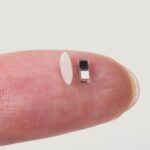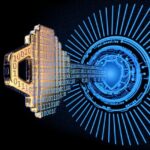The commercial successors to the Space Shuttle have been selected. NASA’s strategy is to encourage healthy competition. So in awarding $1.1 billion in contracts it has divided the money among three companies with three different technologies. They include:
SpaceX has received $400 million from NASA. It leads the other companies in terms of its development achievements and plans to launch a first human crewed flight in 2015 atop its own Falcon-9 launch vehicle. Dragon will seat seven passengers. It incorporates abort capability all the way to orbit, something the Shuttle never had. It also features a powered descent system for landing on the ground (see picture below). Of those receiving contracts from NASA, only SpaceX has actually flown.
Boeing received $460 million. Its capsule is also designed for a crew of seven and will be launched using the Atlas V rocket from United Launch Alliance. The capsule looks similar to the Apollo and uses some of its legacy and proven technology. It also incorporates some of the Orion capsule features, NASA’s own crewed capsule designed for future Deep Space missions. The CST-100 will also feature an abort system in the event of a problem at launch. First test flights are planned for 2016.
SNC also known as Sierra Nevada received $212.5 million for its mini-shuttle space plane called Dream Chaser. Dream Chaser was first conceived as a NASA mini-shuttle but the project was cancelled only to be revived by private enterprise. Launched from the top of an Atlas V rocket, Dream Chaser plans to make its first orbital flight in 2016. An approach and landing test is scheduled for late 2012. Dream Chaser also has the capability of carrying a crew of seven into orbit. Of the three commercial launchers only Dream Chaser will be capable of landing on a runway in similar fashion to the Space Shuttle.
Until these American companies have their spacecraft ready to go the United States will still contract Russia and its proven Soyuz technology to send its astronauts into orbit and rendezvous with the International Space Station.










None of these three systems will do anything that needs to be done. The least bad is the SpaceX system, which is integral with Falcon 9 Heavy Lift development. Falcon 9 Heavy Lift is basically three Falcon 9s strapped together with clever fuel management designed to leave the center Falcon 9 full of fuel when the outrigger Falcon 9s are depleted of fuel. That three-stage lashup should be able to orbit a 100,000 payload cheaper than anything else. Still, estimated costs are about $1,000/pound. That’s a hell of a lot cheaper than the Space Shuttle. SpaceX is more likely than Boeing or SNC to restrain cost overruns to a smaller multiple of projections. I hope the payloads will be robotic systems and not people.
It is interesting to see that Boeing received the largest amount of money. It has the legacy relationship with NASA and probably the most cachet because, I’m sure, many of its staffers are ex-NASA or former NASA sub-contractors. But it has little new to offer in its solution.
SpaceX looks like the most economical choice for returning to human low-Earth orbital flight on American-built spacecraft. Dragon appears to have the flexibility of Soyuz which in its various configurations serves as a crew or supply vessel. But if Dragon implements successfully the spacecraft has some neat new features incorporated such as soft-landing capability.
Getting the cost down below $1,000 pound to orbit has to be one of the bigger challenges yet to be achieved. Virgin Galactic hopes to use its White Knight mother ship with a mated rocket to launch small payloads into orbit for $100 a pound. But ultimately the success of human activity in space will require us to develop capacity to manufacture the things we need for survival and future growth from what we find in space.
rather see Space X & Sierra NV Corp get soime funding & Boeing last.
To expand Commercial Manned Space for all.